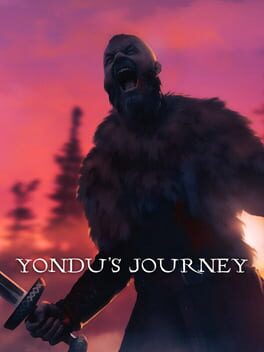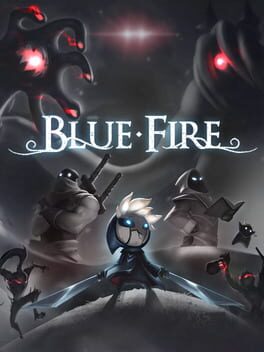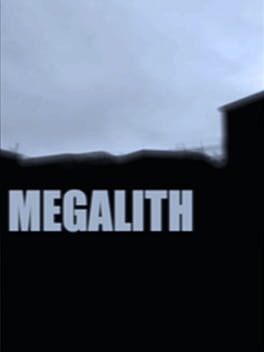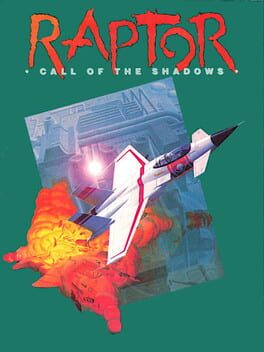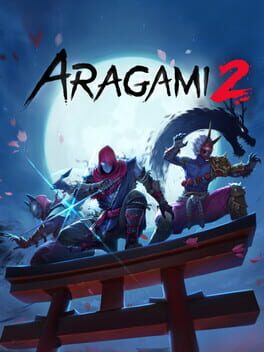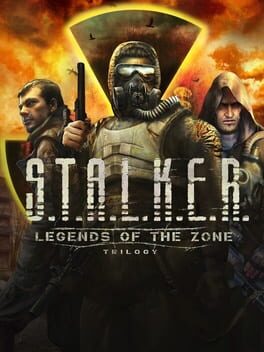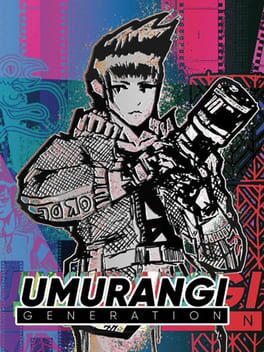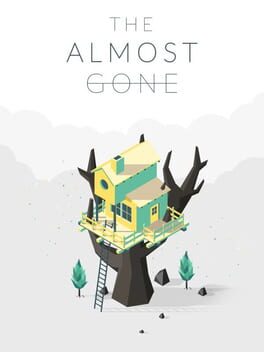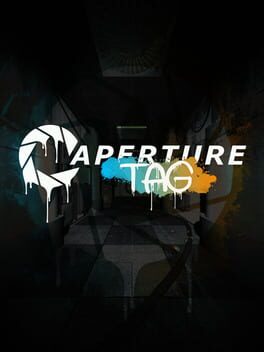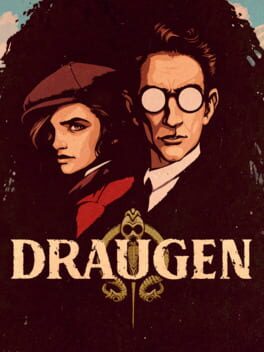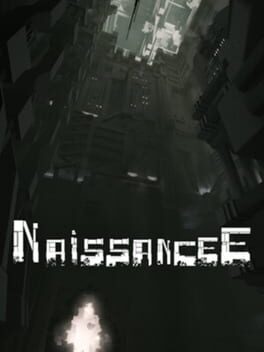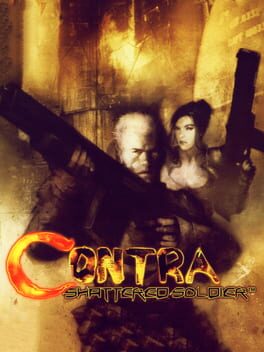TidB
130 Reviews liked by TidB
Yondu's Journey
2023
It's a short FMV viking game.
I'm not a fan of graphic violence, so I had to skip some scenes, there's only so much blood and gore my eyes can withstand. The story is a plain bloodshed survival quest that never gained my interest. And it became a real chore when I somehow managed to make ALL the wrong decisions…
Honestly, when there's only one correct answer that lets you continue the journey, the "choice" mechanic feels excessive. 30-40 minutes of playtime could be easily condensed into a short movie, since the production value is good and the narrative is straightforward.
I'm not a fan of graphic violence, so I had to skip some scenes, there's only so much blood and gore my eyes can withstand. The story is a plain bloodshed survival quest that never gained my interest. And it became a real chore when I somehow managed to make ALL the wrong decisions…
Honestly, when there's only one correct answer that lets you continue the journey, the "choice" mechanic feels excessive. 30-40 minutes of playtime could be easily condensed into a short movie, since the production value is good and the narrative is straightforward.
Blue Fire
2021
I honestly had high hopes for Blue Fire but I left feeling underwhelmed and a little disappointed.
Wether it’s the soundtrack or the visuals, Blue Fire just feels like it needs to be compared to a 3D Hollow Knight. However the visuals and soundtrack is about where I would stop the comparison.
Unfortunately the combat is an uninteresting, forgettable joke. I often found areas to have a minor smattering of enemy’s that do barley any damage or inconvenience you in the slightest. This also applies to bosses that poses little a threat when you always have max health charges. In my entire play through I didn’t die once.
I should also mention the economy, or lack there of. At any given point in time I was filthy rich (unlike reality) and whenever I found a new vendor I would immediately buy out all of their stock. Not only this it also applies to health recharges as whenever I would use 1 or 2 it wouldn’t be long before I was maxed out again.
Blue Fire does have a relatively fun movement system, as your progress additional jumps and dashes become apart of your traversal set which is nice. But it feels quiet essential as there are many points in which this game requires you to backtrack or re explore an entire area again as it now has collectables required to progress.
Personally I find for every nice thing I can say about Blue Fire I could also point out the many flaws regarding the same thing. Blue Fire feels like it wants to be more but just requires that extra polish.
Wether it’s the soundtrack or the visuals, Blue Fire just feels like it needs to be compared to a 3D Hollow Knight. However the visuals and soundtrack is about where I would stop the comparison.
Unfortunately the combat is an uninteresting, forgettable joke. I often found areas to have a minor smattering of enemy’s that do barley any damage or inconvenience you in the slightest. This also applies to bosses that poses little a threat when you always have max health charges. In my entire play through I didn’t die once.
I should also mention the economy, or lack there of. At any given point in time I was filthy rich (unlike reality) and whenever I found a new vendor I would immediately buy out all of their stock. Not only this it also applies to health recharges as whenever I would use 1 or 2 it wouldn’t be long before I was maxed out again.
Blue Fire does have a relatively fun movement system, as your progress additional jumps and dashes become apart of your traversal set which is nice. But it feels quiet essential as there are many points in which this game requires you to backtrack or re explore an entire area again as it now has collectables required to progress.
Personally I find for every nice thing I can say about Blue Fire I could also point out the many flaws regarding the same thing. Blue Fire feels like it wants to be more but just requires that extra polish.
Megalith
2021
I played the shareware version of this game countless times as a kid, and finally beat the whole thing a few days ago. Raptor was a formative game for little Alex, and while it's definitely cathartic to have finally completed it nearly 30 years later, the game definitely isn't the masterpiece I grew up thinking it was.
That being said, it's a solid little shmup, and I have SERIOUS ADVICE for anyone who has unfinished business with Raptor like I did.
Tip #1: For the first chunk of the game, the only weapons you should buy are the Always Equipped items. You should obviously pay to top up on health, but that's it. You'll acquire a handful of toggleable missiles just by playing through the game, and those will be plenty until you have enough money for your first big purchase. (More on that later)
Tip #2: When using multiple selectable missiles, the best way to murder everything in sight is to spam the Alt key to cycle through whatever weapons you've acquired for free while holding the spacebar. This will not only increase your rate of fire, it will make sure you're hitting enemies on the ground as well as in the air with more than just your machine gun. This is the strategy that works best until...
Tip #3: The OD55 Odin Laser Turret. This is going to be your best friend. There is a weaker gun that also auto-targets like the Odin does, but it fires machine gun rounds that take time to travel across the screen, while the Odin's laser is instantaneous. It's absolutely the best weapon in the game, and one of the only that allows you to do damage without being directly below an enemy. This costs half a million dollars, so it'll take a while to get there, but selling the selectable weapons you've acquired will go a long way towards funding your purchase.
Tip #4: Outer Regions Wave 3 has an extra shield very early in the level after just two little waves of enemy ships. It'll be on the left side, and you should grab it, then immediately abort the mission. Aborting does not restart your health or inventory, so you can replay the first 45 seconds of this level over and over to build up shield layers. If you buy shields from the store, you max out at 5 (and they're too expensive to justify until late in the game). However, if you acquire these shields through this specific level, you can hold as many as 11 of them. This is invaluable! I recommend getting to this level as soon as you're able, and then holding off on any Outer Regions progress beyond the first part of level 3 until you have completed the Bravo and Tango missions entirely.
Tip #5: Avoid any laser-wielding enemies like the plague, and don't be cocky with missiles either. You can tank those yellow circle shots without too much trouble, but some enemies fire like 8 missiles at once, and a single laser shot (only appears late in the game) will completely melt 2/3 of an entire layer of shields. DO NOT ENGAGE, IT IS NOT WORTH IT
Tip #6: When you've finally got enough money, your second weapon purchase should be the Twin Laser, which costs $1.75 Million, and is the most expensive weapon in the game. The big strategy here is to mainly use your auto-targeting laser until a boss shows up, and then waste the boss with the Twin Laser while it's entering the visible area, as bosses will not start firing until they arrive in the center of the screen. Once they begin firing, it's best to let the auto-targeting laser do the rest of the work while you focus on dodging shots.
Tip #7: There is one exception to that last rule. On the final wave of Outer Regions, the giant laser will be your best bet for most of the level, as there are too many enemies with too much health for your Odin to keep up with, so melt as many enemies as you can before they get the chance to fire at all.
I hope this helps someone, Raptor is definitely worth revisiting if you have any history with it, though I don't think it's a must-play for newcomers unless you watch some gameplay and are really into the vibe.
That being said, it's a solid little shmup, and I have SERIOUS ADVICE for anyone who has unfinished business with Raptor like I did.
Tip #1: For the first chunk of the game, the only weapons you should buy are the Always Equipped items. You should obviously pay to top up on health, but that's it. You'll acquire a handful of toggleable missiles just by playing through the game, and those will be plenty until you have enough money for your first big purchase. (More on that later)
Tip #2: When using multiple selectable missiles, the best way to murder everything in sight is to spam the Alt key to cycle through whatever weapons you've acquired for free while holding the spacebar. This will not only increase your rate of fire, it will make sure you're hitting enemies on the ground as well as in the air with more than just your machine gun. This is the strategy that works best until...
Tip #3: The OD55 Odin Laser Turret. This is going to be your best friend. There is a weaker gun that also auto-targets like the Odin does, but it fires machine gun rounds that take time to travel across the screen, while the Odin's laser is instantaneous. It's absolutely the best weapon in the game, and one of the only that allows you to do damage without being directly below an enemy. This costs half a million dollars, so it'll take a while to get there, but selling the selectable weapons you've acquired will go a long way towards funding your purchase.
Tip #4: Outer Regions Wave 3 has an extra shield very early in the level after just two little waves of enemy ships. It'll be on the left side, and you should grab it, then immediately abort the mission. Aborting does not restart your health or inventory, so you can replay the first 45 seconds of this level over and over to build up shield layers. If you buy shields from the store, you max out at 5 (and they're too expensive to justify until late in the game). However, if you acquire these shields through this specific level, you can hold as many as 11 of them. This is invaluable! I recommend getting to this level as soon as you're able, and then holding off on any Outer Regions progress beyond the first part of level 3 until you have completed the Bravo and Tango missions entirely.
Tip #5: Avoid any laser-wielding enemies like the plague, and don't be cocky with missiles either. You can tank those yellow circle shots without too much trouble, but some enemies fire like 8 missiles at once, and a single laser shot (only appears late in the game) will completely melt 2/3 of an entire layer of shields. DO NOT ENGAGE, IT IS NOT WORTH IT
Tip #6: When you've finally got enough money, your second weapon purchase should be the Twin Laser, which costs $1.75 Million, and is the most expensive weapon in the game. The big strategy here is to mainly use your auto-targeting laser until a boss shows up, and then waste the boss with the Twin Laser while it's entering the visible area, as bosses will not start firing until they arrive in the center of the screen. Once they begin firing, it's best to let the auto-targeting laser do the rest of the work while you focus on dodging shots.
Tip #7: There is one exception to that last rule. On the final wave of Outer Regions, the giant laser will be your best bet for most of the level, as there are too many enemies with too much health for your Odin to keep up with, so melt as many enemies as you can before they get the chance to fire at all.
I hope this helps someone, Raptor is definitely worth revisiting if you have any history with it, though I don't think it's a must-play for newcomers unless you watch some gameplay and are really into the vibe.
Aragami 2
2021
Where do I begin with another game so big it tanks the company?
The story is simultaneously horrible and themetically engaging (Sanzu's story should have been the main story), the music's the most generic western pseudo-japanese inspired bullshit, the visuals are both incredibly crisp and boring, the levels and missions are repetitive and approachable from so many different aspects, the character writing feels like they took the head of a Sharknado writer and put it on the body of a Daredevil tv show writer, and the game mechanics and experience are just something else.
This game creates the unique blend of movement stealth game with rpg mechanics, where the movement is so smooth and fluid with so much time spent making the gameplay smooth and never mistake your intentions with your inputs (there's an auto-target reticle in the game for teleporting to ledges and it never misses your intended target, which is wizardry). The abilities allow you to approach any mission in so many different ways with additional objectives such as pacifism or murder, and no detection or fully alerted vastly changing how the game plays. The stealth is designed such that you can always take any hostile out at any time in any way no matter what the situation, and yet presents a unique puzzle each time you come across anyone. And yet, for all this praise of managing the impossible task to create one game that manages these goals with a 20+ hour completion time, the experience comes off as incomplete, buggy as hell, and just drags over it's run time.
Yet another game to add to the list of games with such lofty goals it literally crushes the studio under their expectations of it's experience, reinforced by the gamer's consensus of more = better for experience. Overall, wait for the next game that manages to execute this vision better, it's too late for this studio anyway.
Really makes you feel like Aragami 2
The story is simultaneously horrible and themetically engaging (Sanzu's story should have been the main story), the music's the most generic western pseudo-japanese inspired bullshit, the visuals are both incredibly crisp and boring, the levels and missions are repetitive and approachable from so many different aspects, the character writing feels like they took the head of a Sharknado writer and put it on the body of a Daredevil tv show writer, and the game mechanics and experience are just something else.
This game creates the unique blend of movement stealth game with rpg mechanics, where the movement is so smooth and fluid with so much time spent making the gameplay smooth and never mistake your intentions with your inputs (there's an auto-target reticle in the game for teleporting to ledges and it never misses your intended target, which is wizardry). The abilities allow you to approach any mission in so many different ways with additional objectives such as pacifism or murder, and no detection or fully alerted vastly changing how the game plays. The stealth is designed such that you can always take any hostile out at any time in any way no matter what the situation, and yet presents a unique puzzle each time you come across anyone. And yet, for all this praise of managing the impossible task to create one game that manages these goals with a 20+ hour completion time, the experience comes off as incomplete, buggy as hell, and just drags over it's run time.
Yet another game to add to the list of games with such lofty goals it literally crushes the studio under their expectations of it's experience, reinforced by the gamer's consensus of more = better for experience. Overall, wait for the next game that manages to execute this vision better, it's too late for this studio anyway.
Really makes you feel like Aragami 2
I think it's pretty easy to take for granted how much official controller support can add to a game. I'll give you an example: Rollercoaster Tycoon 3 on the Steam Deck is an unmitigated nightmare that, at best, is barely playable unless you have a mouse and keyboard plugged in. But the version for the Nintendo Switch works surprisingly well. Further case and point: anyone who has ever tried rebinding the buttons on a controller so they could play any of the three S.T.A.L.K.E.R. games developed and released between 2007-2009 probably came to the same realization that the developers of System Shock 2's canceled Dreamcast port did: there just aren't enough buttons on any controller for this shit, man. Unless you want to sacrifice your ability to lean around corners, turn on your flashlight, change the firing mode of your weapon, or have quick access to healing items, trying to play the PC versions of S.T.A.L.K.E.R. with a controller is inadvisable until further notice.
Like Rollercoaster Tycoon 3's Switch port, what drew me to the Legends of the Zone Trilogy bundle currently on sale for the Xbox and (surprisingly) PlayStation isn't that I had never touched these games before, but I was genuinely curious to see how a franchise that has never had official controller support before would handle the task of running on console hardware. And surprisingly, it works. It works about as well as you would expect it to, anyway. It is still a little finicky in some regards: sensitivity between aiming regularly and aiming down sights differs to a distracting degree, the weapon wheel doesn't pause or slow the game while you're using it, and navigating the inventory without a cursor slows things down, which isn't aided by the fact that using the inventory, too, does not slow or pause the game for you. Some of that clunkiness aside, though, these control fine and are perfectly adequate ways to experience the vanilla versions of these games if you've either never played them before or simply want a reason to play them again. They've added achievements to all three games, as well, which is always a nice touch. Multiplayer modes aren't present, but it should be common knowledge by now that multiplayer doesn't tend to carry over when an older game gets re-released unless it was a notable part of the package (and here, it was not).
This is sort of reminiscent of that time they ported Half-Life 2, FEAR, Far Cry, and Doom 3 to seventh-gen systems to accommodate for the fact that neither the PS2 nor original Xbox could manage stable/struggled to manage stable ports of either, except they've done it two console generations later. I don't really mind that though; I find this sort of re-release nostalgic. On the subject of this being released on last-gen hardware rather than current-gen systems, perhaps they didn't have the resources for that? That distinction does make this feel a bit lazier than it should to prying eyes, but on a PlayStation 5, it emulates just fine, looks great in 4K, and feels fine enough with a DualSense. I am a bit bummed that they didn't consider porting this to the Switch, but I can see where technical barriers and monetary incentives would have prevented such a port from happening. Oh well, maybe next time.
There are a couple of interesting differences I've noticed so far:
- The Energy Drinks you'll find in-game now have the branding/product placement that they apparently did in the original European releases.
- They've done their due diligence, and the Chernobyl in Shadow of Chernobyl is now spelled in Ukrainian fashion, with an O instead of an E. They've also gone ahead and done this for S.T.A.L.K.E.R. 2, so it's not too surprising, but what is is that they've gone ahead and edited the original menu images to accommodate for this change.
- As has been common with these re-releases since Whoopi Goldberg introduced the Looney Tunes (probably), there's a disclaimer in here about these games being historical artifacts (no pun intended). While you could point to something like the use of the R slur in these games for that disclaimer, the most likely explanation for what they're referring to is that these games have never had a particularly positive outlook on the Ukranian military. Preeeeetty bad timing for that, I'd say.
ETA: Easily the roughest bit of transition from PC to Consoles is that I don't think any of these ports allow you to quicksave. Given that S.T.A.L.K.E.R. has always been firmly in the camp of "quicksave every five minutes in case you die instantly", this means that your manual saves will fill up quickly. There's also the fact that these being straightforward ports means that there are no quickslots for any game that isn't Call of Pripyat. Prepare to be sorting through that inventory a lot just to use one energy drink! That being said, I stand by my assessment thus far: these are accessible ports that mostly work out of the box. If that's what you're looking for, it's forty bucks well spent.
ETA2: Lowering my score for this by a star. Everything I said is true, but the faithfulness of these ports also extends to their notable technical shortcomings, including crashes, bugs that have never officially been patched, and inconsistent spawning/despawning. These games are still playable and fine, evidenced by the fact that I just spent 22 hours in Shadow of Chernobyl with very few issues. But if you're coming in expecting these ports to have been polished for consoles beyond their controls and presentation, they're somewhat disappointing, although the likely explanation is that there might not have been much to work with.
Like Rollercoaster Tycoon 3's Switch port, what drew me to the Legends of the Zone Trilogy bundle currently on sale for the Xbox and (surprisingly) PlayStation isn't that I had never touched these games before, but I was genuinely curious to see how a franchise that has never had official controller support before would handle the task of running on console hardware. And surprisingly, it works. It works about as well as you would expect it to, anyway. It is still a little finicky in some regards: sensitivity between aiming regularly and aiming down sights differs to a distracting degree, the weapon wheel doesn't pause or slow the game while you're using it, and navigating the inventory without a cursor slows things down, which isn't aided by the fact that using the inventory, too, does not slow or pause the game for you. Some of that clunkiness aside, though, these control fine and are perfectly adequate ways to experience the vanilla versions of these games if you've either never played them before or simply want a reason to play them again. They've added achievements to all three games, as well, which is always a nice touch. Multiplayer modes aren't present, but it should be common knowledge by now that multiplayer doesn't tend to carry over when an older game gets re-released unless it was a notable part of the package (and here, it was not).
This is sort of reminiscent of that time they ported Half-Life 2, FEAR, Far Cry, and Doom 3 to seventh-gen systems to accommodate for the fact that neither the PS2 nor original Xbox could manage stable/struggled to manage stable ports of either, except they've done it two console generations later. I don't really mind that though; I find this sort of re-release nostalgic. On the subject of this being released on last-gen hardware rather than current-gen systems, perhaps they didn't have the resources for that? That distinction does make this feel a bit lazier than it should to prying eyes, but on a PlayStation 5, it emulates just fine, looks great in 4K, and feels fine enough with a DualSense. I am a bit bummed that they didn't consider porting this to the Switch, but I can see where technical barriers and monetary incentives would have prevented such a port from happening. Oh well, maybe next time.
There are a couple of interesting differences I've noticed so far:
- The Energy Drinks you'll find in-game now have the branding/product placement that they apparently did in the original European releases.
- They've done their due diligence, and the Chernobyl in Shadow of Chernobyl is now spelled in Ukrainian fashion, with an O instead of an E. They've also gone ahead and done this for S.T.A.L.K.E.R. 2, so it's not too surprising, but what is is that they've gone ahead and edited the original menu images to accommodate for this change.
- As has been common with these re-releases since Whoopi Goldberg introduced the Looney Tunes (probably), there's a disclaimer in here about these games being historical artifacts (no pun intended). While you could point to something like the use of the R slur in these games for that disclaimer, the most likely explanation for what they're referring to is that these games have never had a particularly positive outlook on the Ukranian military. Preeeeetty bad timing for that, I'd say.
ETA: Easily the roughest bit of transition from PC to Consoles is that I don't think any of these ports allow you to quicksave. Given that S.T.A.L.K.E.R. has always been firmly in the camp of "quicksave every five minutes in case you die instantly", this means that your manual saves will fill up quickly. There's also the fact that these being straightforward ports means that there are no quickslots for any game that isn't Call of Pripyat. Prepare to be sorting through that inventory a lot just to use one energy drink! That being said, I stand by my assessment thus far: these are accessible ports that mostly work out of the box. If that's what you're looking for, it's forty bucks well spent.
ETA2: Lowering my score for this by a star. Everything I said is true, but the faithfulness of these ports also extends to their notable technical shortcomings, including crashes, bugs that have never officially been patched, and inconsistent spawning/despawning. These games are still playable and fine, evidenced by the fact that I just spent 22 hours in Shadow of Chernobyl with very few issues. But if you're coming in expecting these ports to have been polished for consoles beyond their controls and presentation, they're somewhat disappointing, although the likely explanation is that there might not have been much to work with.
Umurangi Generation
2020
[Disclaimer: Ich steh in den Credits, hallo!]
Ich weiß bis heute nicht genau was ich von Umurangi Generation halten soll.
Ein Fotografie Spiel bei dem du deine Augen nach bestimmten Motiven offen halten und dich manchmal kreativ anstellen musst, um all die Aufgaben abzuarbeiten, ist das ideale Gameplay für ein Spiel dessen Storytelling ausschließlich durch visuelle Clues erzählt wird. Ob es das Level an sich ist, Veränderungen im Freundeskreis, oder auch mal der plumpe Klassiker: Der Zeitungsartikel auf der Frontpage.
Das Spiel hat damals einiges mit mir gemacht. Ein Fotografie Spiel von irgendso einem Youtuber den ich noch abonniert hatte. Inspiriert durch die "Australian bushfire season" 2018/2019 und wie, trotz der eindeutigen Umstände die Politik lieber alles mögliche dafür verantwortlich machen wollte, statt die Situation in der wir uns nunmal befinden, erschien dieses Spiel im Mai 2020 gleich inmitten der nächsten Krise.
Ein Spiel darüber wie die Politik uns versagt hat, mit Lebensmittelmängeln überall, Alltagsmasken, Leuten die auf den Straßen protestieren, Ordnungshütern die stärker bewaffnet sind als sie es sollten, während Politiker sich eine schöne Zeit im Urlaub gönnen.
All das während ich mir Sorgen machte, ob Familienmitglieder Covid überleben würden, während meine Twitter-Timeline voll mit Polizeigewalt in Amerika war.
Sehr viel Chaos auf der Welt, sehr viel Leid und Ungerechtigkeit, Freunden und Bekannten die am Anfang vom halbherzigen Lockdown fast durchgedreht sind - und ich hockte hier und durfte mir lustige Sätze ausdenken wieso irgendein Videospiel nicht so gut ist um über die Runden zu kommen.
Und der Fotograf des Spiels hockte da und hat sich lustige Motive ausgedacht um über die Runden zu kommen.
Diese Parallele hat Klick gemacht, so wie kaum ein Videospiel jemals Klick gemacht hat bei mir.
Das Spiel hat damals definitiv etwas mit mir gemacht, auch wenn ich nun vier Jahre später, diese Emotionen nicht mehr genau beschreiben kann.
Rückblickend war es wohl auch so ein bisschen der Auslöser, meine Attitude gegenüber Spielen allgemein zu ändern. Und das ist mir unendlich viel wert.
Das Spiel an sich allerdings... na ja. Ich sehe durchaus, dass die Emotionen die ein Spiel auslösen kann, deutlich mehr Wert haben können als die technische Umsetzung. Aber Umurangi Generation ist leider ein Wrack.
Der Player Controller ist so basic wie es nur irgendwie geht. Ständig bleibt man irgendwo hängen, oder rutscht irgendwo ab, oder verhakt sind in irgendeinem random Asset war auf dem Boden liegt.
Die Navigation ist so schlimm, wie es nur irgendwie sein kann. Die Tatsache, dass ein Doppelsprung eingebaut werden musste damit du aus bestimmten Ecken überhaupt wieder rauskommen kannst, ist da schon Hinweis genug.
Nicht selten springst du gegen ein Brett und machst danach einen Super Bounce, oder du rennst einfach nur eine Treppe hoch und fällst durch weil du zu schnell warst, oder oder oder.
Das ganze wird nur noch dann schlimmer, wenn du im DLC die Inline Skates freischaltest, weil du mit denen nun wirklich ÜBERALL festhängen wirst und dich kaum durch eine Gasse bewegen kannst, um durch die hauchdünnen Wände zu clippen. Im Grunde kannst du jedem Level durch jede Wand entkommen, indem du einfach nur kurz Shift drückst. Aber selbst ohne es zu provozieren, ist jede Form der Navigation hier unglaublich mies.
Fehlende Komfortfunktionen im Rest der Steuerung und die Tatsache, dass die Mausempfindlichkeit je nach Objektiv komplett broken ist, runden den Eindruck nur noch ab.
Auch die Aufgaben sind nie sonderlich interessant und wirklich nur ein abarbeiten von Dingen die du "sehen" musst. Klar sind diese nur Mittel zum Zweck, doch da du Missionen nicht beenden kannst ohne wirklich ALLES gemacht haben zu müssen, und du auch mitten im Level nicht speichern darfst, kann das halt sehr schnell sehr frustrierend sein.
Im Grunde wirkt alles in diesem Spiel nur wie ein sehr basic, sehr janky, aber auch sehr ein umständlicher Mittel zum Zweck für das, was das Spiel erzählen möchte.
Und das Leute das akzeptieren um den guten Kern hervorzuheben, kann ich gut nachvollziehen! Wie gesagt, ich glaub das Spiel war der Anstoß für mich zu lernen Videospiele doch ein bisschen anders zu betrachten.
Es macht das Gameplay nur nicht sonderlich viel erträglicher.
Ich weiß bis heute nicht genau was ich von Umurangi Generation halten soll.
Ein Fotografie Spiel bei dem du deine Augen nach bestimmten Motiven offen halten und dich manchmal kreativ anstellen musst, um all die Aufgaben abzuarbeiten, ist das ideale Gameplay für ein Spiel dessen Storytelling ausschließlich durch visuelle Clues erzählt wird. Ob es das Level an sich ist, Veränderungen im Freundeskreis, oder auch mal der plumpe Klassiker: Der Zeitungsartikel auf der Frontpage.
Das Spiel hat damals einiges mit mir gemacht. Ein Fotografie Spiel von irgendso einem Youtuber den ich noch abonniert hatte. Inspiriert durch die "Australian bushfire season" 2018/2019 und wie, trotz der eindeutigen Umstände die Politik lieber alles mögliche dafür verantwortlich machen wollte, statt die Situation in der wir uns nunmal befinden, erschien dieses Spiel im Mai 2020 gleich inmitten der nächsten Krise.
Ein Spiel darüber wie die Politik uns versagt hat, mit Lebensmittelmängeln überall, Alltagsmasken, Leuten die auf den Straßen protestieren, Ordnungshütern die stärker bewaffnet sind als sie es sollten, während Politiker sich eine schöne Zeit im Urlaub gönnen.
All das während ich mir Sorgen machte, ob Familienmitglieder Covid überleben würden, während meine Twitter-Timeline voll mit Polizeigewalt in Amerika war.
Sehr viel Chaos auf der Welt, sehr viel Leid und Ungerechtigkeit, Freunden und Bekannten die am Anfang vom halbherzigen Lockdown fast durchgedreht sind - und ich hockte hier und durfte mir lustige Sätze ausdenken wieso irgendein Videospiel nicht so gut ist um über die Runden zu kommen.
Und der Fotograf des Spiels hockte da und hat sich lustige Motive ausgedacht um über die Runden zu kommen.
Diese Parallele hat Klick gemacht, so wie kaum ein Videospiel jemals Klick gemacht hat bei mir.
Das Spiel hat damals definitiv etwas mit mir gemacht, auch wenn ich nun vier Jahre später, diese Emotionen nicht mehr genau beschreiben kann.
Rückblickend war es wohl auch so ein bisschen der Auslöser, meine Attitude gegenüber Spielen allgemein zu ändern. Und das ist mir unendlich viel wert.
Das Spiel an sich allerdings... na ja. Ich sehe durchaus, dass die Emotionen die ein Spiel auslösen kann, deutlich mehr Wert haben können als die technische Umsetzung. Aber Umurangi Generation ist leider ein Wrack.
Der Player Controller ist so basic wie es nur irgendwie geht. Ständig bleibt man irgendwo hängen, oder rutscht irgendwo ab, oder verhakt sind in irgendeinem random Asset war auf dem Boden liegt.
Die Navigation ist so schlimm, wie es nur irgendwie sein kann. Die Tatsache, dass ein Doppelsprung eingebaut werden musste damit du aus bestimmten Ecken überhaupt wieder rauskommen kannst, ist da schon Hinweis genug.
Nicht selten springst du gegen ein Brett und machst danach einen Super Bounce, oder du rennst einfach nur eine Treppe hoch und fällst durch weil du zu schnell warst, oder oder oder.
Das ganze wird nur noch dann schlimmer, wenn du im DLC die Inline Skates freischaltest, weil du mit denen nun wirklich ÜBERALL festhängen wirst und dich kaum durch eine Gasse bewegen kannst, um durch die hauchdünnen Wände zu clippen. Im Grunde kannst du jedem Level durch jede Wand entkommen, indem du einfach nur kurz Shift drückst. Aber selbst ohne es zu provozieren, ist jede Form der Navigation hier unglaublich mies.
Fehlende Komfortfunktionen im Rest der Steuerung und die Tatsache, dass die Mausempfindlichkeit je nach Objektiv komplett broken ist, runden den Eindruck nur noch ab.
Auch die Aufgaben sind nie sonderlich interessant und wirklich nur ein abarbeiten von Dingen die du "sehen" musst. Klar sind diese nur Mittel zum Zweck, doch da du Missionen nicht beenden kannst ohne wirklich ALLES gemacht haben zu müssen, und du auch mitten im Level nicht speichern darfst, kann das halt sehr schnell sehr frustrierend sein.
Im Grunde wirkt alles in diesem Spiel nur wie ein sehr basic, sehr janky, aber auch sehr ein umständlicher Mittel zum Zweck für das, was das Spiel erzählen möchte.
Und das Leute das akzeptieren um den guten Kern hervorzuheben, kann ich gut nachvollziehen! Wie gesagt, ich glaub das Spiel war der Anstoß für mich zu lernen Videospiele doch ein bisschen anders zu betrachten.
Es macht das Gameplay nur nicht sonderlich viel erträglicher.
The Almost Gone
2020
A few interesting environmental puzzles, but they're crushed under the weight of heavy-handed metaphor. The mixture of weepiness and cynicism almost reminded me of Photopia, except that Alley in Photopia was a happy kid, loved by her friends and family. The protagonist of The Almost Gone', by comparison, apparently never managed to eke out a moment's joy in her miserable existence--which makes it proportionally difficult to care about her untimely death. Early on, I examined a shattered plate on the ground, only for her to remark that she knows how it feels. She continued to make similarly one-note observations for almost the next hour before I simply gave up.
For what this is, I think its good. The puzzles are fun, and the concept of using a paint gun that shoots the gel from portal 2 to solve puzzles was, and still is, a very unique concept. The design of everything is well put together, charming, and with good puzzles. Overall Making Aperture Tag a very fun little journey through the portal universe.
The biggest critique here is obviously the voice acting and dialogue, Nigel just isn't a funny character, and the references to the actual Portal games only felt annoying to me, "for the people who are still alive," where have I heard that one before...
But, I do like the rest of the game. I do feel that a lot of the puzzles fall into the issue of not really feeling like puzzles but instead a series of events, there still were highlights though, Test Chamber 7 and Chapter 4's Chamber 8 were my favorite chambers. Seeing the older Portal maps, that were also seen in Portal 2, was disappointing for the game's length, but at least they took a different spin with them, since you no longer have a portal gun. So, it's not bad, it's just pretty underwhelming compared to the livelihood of Portal 2.
But, I do like the rest of the game. I do feel that a lot of the puzzles fall into the issue of not really feeling like puzzles but instead a series of events, there still were highlights though, Test Chamber 7 and Chapter 4's Chamber 8 were my favorite chambers. Seeing the older Portal maps, that were also seen in Portal 2, was disappointing for the game's length, but at least they took a different spin with them, since you no longer have a portal gun. So, it's not bad, it's just pretty underwhelming compared to the livelihood of Portal 2.
Draugen
2019
I was briefly following this game's development (ages ago), because "sassy girl detective who gives off gay vibes" sounded like a very promising co-protagonist. In light of that, the end of act 2 certainly left me distraught, but perhaps not for the reasons intended.
Draugen does a great job of embodying you in the worldspace, but the story isn't as tight. The game revolves around two central mysteries. One is a grim, atmospheric tale of a town rotted by a family feud. The other is Silent Hill 2. This second plot majorly brings down the first, not only because it's been done better in a seminal PS2 game, but because your jerk of a protagonist cannot be bothered to care about the first one. (Kinda impressive, considering all the corpses littering the island.) Lissie's claim that they were "brought here to tell [the villagers'] story" is pretty rich, when the game can't even bother to do so.
Draugen does a great job of embodying you in the worldspace, but the story isn't as tight. The game revolves around two central mysteries. One is a grim, atmospheric tale of a town rotted by a family feud. The other is Silent Hill 2. This second plot majorly brings down the first, not only because it's been done better in a seminal PS2 game, but because your jerk of a protagonist cannot be bothered to care about the first one. (Kinda impressive, considering all the corpses littering the island.) Lissie's claim that they were "brought here to tell [the villagers'] story" is pretty rich, when the game can't even bother to do so.
The Almost Gone
2020
NaissanceE
2014
NaissanceE
2014
This review contains spoilers
i absolutely adore this game, the first time i played it was to make a video essay for a class and i ended up finishing it three times in two days. it made me feel physically cold to play, i was so tense and on edge, it was just tough to play. on the surface it was not fun but i think the more time passes, the more time i realize how deeply this game made me feel things and connect with the experience goals. the darkness, the noise, the contrast, everything feels really in tune in making the game feel hostile, i think it really succeeded. getting to the end of the game, i honestly thought that i could just start crying, so i was really underwhelmed with the "boss battle" type ending. the game put me in the perfect position to really knock the experience out of the park emotionally, so just more of the same except less interesting for the ending was a huge bummer. that's really the main fault i think the game has, i really love it otherwise. incredible audio design, cool mechanics, it's just so good.
Zum ersten mal durchgespielt! Und dann auch nur auf leicht! Und dann auch nur mit einem Tag Pause dazwischen dank Savestate beim Checkpoint!
Puh, was für ein Spiel...
Nach misslungenen Versuchen auf der PS1, wollte man sich erneut an einem modernen, klassischen Contra für die PS2 versuchen und ging ähnliche Wege wie auch schon das, glaub ich, viel beliebtere Gradius V.
Der Schwierigkeitsgrad? So schwer wie noch nie.
Powerups? Nicht vorhanden.
Aber bis auf ein paar Änderungen in der Steuerungen und der muddy 3D Grafik ist ein Contra, alright.
Ich find die Änderungen des Waffensystems irgendwie interessant. Statt mit einem Peashooter anzufangen und Waffen aufzuheben, die man beim Ablegen aber wieder verliert, hat man hier nun drei Waffen:
Die standard Machine Gun, den Flammenwerfer und einen Granatwerfer. Alles davon nochmal mit einer aufladbaren Sekundärfunktion, die ich aber kaum nutzte.
Und das ist interessant. Immer wenn ich in einem alten Contra online nachschauen wollte wie Leute bitte einen bestimmten Boss plätten, seh ich wie sie mit zwei mal der Crash Cannon auftauchen und er innerhalb von Sekunden stirbt.
Jetzt weiß das Spiel stets welche Waffen du dabei hast und konnte dementsprechend drumherum designed werden, statt Kämpfe so zu balancen, dass sie mit guten und schlechten Waffen Spaß machen.
Außerdem ist wirkt die neue Fokussier-Deine-Blickrichtung-Aber-Lauf-Noch-Rum Funktion wunder, da die Bosse scheinbar direkt um diese Fähigkeit drumherum gebaut wurden.
Aber der Schwierigkeitsgrad, eieieiei... Contra war schon immer hart. Und das weniger auf einer "sei einfach clever und flink" und mehr auf der "lern patterns und probiers nochmal beim zweiten Versuch"--Seite.
Was für eine Präzision Shattered Soldier hier von dir verlangt, ragt allerdings schon arg in eine Shmup-Richtung.
Autoscroller Parts bei denen du sofort ein Leben lässt, wenn du nicht so schnell wie es geht die Ebene wechselst.
Eine Decke verschiebt sich und wenn du das nicht weißt, stirbst du.
Der Gegner springt nun drei mal und nicht nur zwei mal und wenn du zu früh aufstehst, stirbst du.
Keinen Hinweis, dass der Gegner nun einen unausweichbaren Angriff macht, dem man nur entkommen kann, wenn man in der Phase davor an die Decke gesprungen ist. Sowas halt.
Das ganze Spiel ist darauf ausgelegt, dass du gewisse Szenen wieder und wieder spielst, auswendig lernen musst, und dann bestehst.
Und wenn man sich mit sowas rumschlagen kann, macht Shattered Soldier auch 'ne ganze menge Richtig!
Viele viele coole Bosse mit interessanten Pattern, bei denen man je nach Waffe eher risky aber effizienter, oder aber sicherer aber langsamer sein kann.
Einige wirklich coole Setpieces und Gegnerdesigns sind dabei. Die Musik macht hier und da auch einen guten Job... ist die meiste Zeit aber sehr generisch um ehrlich zu sein.
Dann gibt's aber auch Bosse die weniger spaßig sind, besonders im finalen Level. Solche Situationen in denen du einem Pattern perfekt ausweichst, der Gegner dann aber ohne Vorwarnung sind genau auf deine aktuelle Position teleportiert für den nächsten Angriff. Und da das random passiert, kannst du nichtmal ausweichen. Oder Sachen die ausm nichts aus dem Himmel fallen, oder noch eine Hitbox haben obwohl sie schon tot sind. Oder Projektile die man einfach nicht sehen konnte.
Extrem nervig sowas, besonders bei diesem enormen Anspruch.
Zum Glück gibt dir das Spiel deshalb ja auch 99 Continues, eine freie Levelwahl und mehr Extra-Leben, je nachdem wie lang du schon spielst, damit es nur eine Frage der Zeit und Ausdauer ist, bis du dich durchgeschlagen hast...
auf leicht.
Auf normal sind es nur noch drei Leben und drei Continues und sorry, aber ne, das werd ich niemals schaffen. Da bin ich mir sicher.
Am Ende bin ich froh es gespielt zu haben und werde es bestimmt in meine unregelmäßige Rotation Contra zu spielen aufnehmen, selbst wenn ich einige male fluchen werde.
Es verlangt irrational viel von dir und ist dabei weder so verrückt, noch stylish wie es sein könnte.
Ich glaube ich mag Neo Contra von den moderneren Titeln immer noch mehr, hab aber trotzdem 'ne gute Zeit gehabt Shattered Soldier endlich zu lernen.
Puh, was für ein Spiel...
Nach misslungenen Versuchen auf der PS1, wollte man sich erneut an einem modernen, klassischen Contra für die PS2 versuchen und ging ähnliche Wege wie auch schon das, glaub ich, viel beliebtere Gradius V.
Der Schwierigkeitsgrad? So schwer wie noch nie.
Powerups? Nicht vorhanden.
Aber bis auf ein paar Änderungen in der Steuerungen und der muddy 3D Grafik ist ein Contra, alright.
Ich find die Änderungen des Waffensystems irgendwie interessant. Statt mit einem Peashooter anzufangen und Waffen aufzuheben, die man beim Ablegen aber wieder verliert, hat man hier nun drei Waffen:
Die standard Machine Gun, den Flammenwerfer und einen Granatwerfer. Alles davon nochmal mit einer aufladbaren Sekundärfunktion, die ich aber kaum nutzte.
Und das ist interessant. Immer wenn ich in einem alten Contra online nachschauen wollte wie Leute bitte einen bestimmten Boss plätten, seh ich wie sie mit zwei mal der Crash Cannon auftauchen und er innerhalb von Sekunden stirbt.
Jetzt weiß das Spiel stets welche Waffen du dabei hast und konnte dementsprechend drumherum designed werden, statt Kämpfe so zu balancen, dass sie mit guten und schlechten Waffen Spaß machen.
Außerdem ist wirkt die neue Fokussier-Deine-Blickrichtung-Aber-Lauf-Noch-Rum Funktion wunder, da die Bosse scheinbar direkt um diese Fähigkeit drumherum gebaut wurden.
Aber der Schwierigkeitsgrad, eieieiei... Contra war schon immer hart. Und das weniger auf einer "sei einfach clever und flink" und mehr auf der "lern patterns und probiers nochmal beim zweiten Versuch"--Seite.
Was für eine Präzision Shattered Soldier hier von dir verlangt, ragt allerdings schon arg in eine Shmup-Richtung.
Autoscroller Parts bei denen du sofort ein Leben lässt, wenn du nicht so schnell wie es geht die Ebene wechselst.
Eine Decke verschiebt sich und wenn du das nicht weißt, stirbst du.
Der Gegner springt nun drei mal und nicht nur zwei mal und wenn du zu früh aufstehst, stirbst du.
Keinen Hinweis, dass der Gegner nun einen unausweichbaren Angriff macht, dem man nur entkommen kann, wenn man in der Phase davor an die Decke gesprungen ist. Sowas halt.
Das ganze Spiel ist darauf ausgelegt, dass du gewisse Szenen wieder und wieder spielst, auswendig lernen musst, und dann bestehst.
Und wenn man sich mit sowas rumschlagen kann, macht Shattered Soldier auch 'ne ganze menge Richtig!
Viele viele coole Bosse mit interessanten Pattern, bei denen man je nach Waffe eher risky aber effizienter, oder aber sicherer aber langsamer sein kann.
Einige wirklich coole Setpieces und Gegnerdesigns sind dabei. Die Musik macht hier und da auch einen guten Job... ist die meiste Zeit aber sehr generisch um ehrlich zu sein.
Dann gibt's aber auch Bosse die weniger spaßig sind, besonders im finalen Level. Solche Situationen in denen du einem Pattern perfekt ausweichst, der Gegner dann aber ohne Vorwarnung sind genau auf deine aktuelle Position teleportiert für den nächsten Angriff. Und da das random passiert, kannst du nichtmal ausweichen. Oder Sachen die ausm nichts aus dem Himmel fallen, oder noch eine Hitbox haben obwohl sie schon tot sind. Oder Projektile die man einfach nicht sehen konnte.
Extrem nervig sowas, besonders bei diesem enormen Anspruch.
Zum Glück gibt dir das Spiel deshalb ja auch 99 Continues, eine freie Levelwahl und mehr Extra-Leben, je nachdem wie lang du schon spielst, damit es nur eine Frage der Zeit und Ausdauer ist, bis du dich durchgeschlagen hast...
auf leicht.
Auf normal sind es nur noch drei Leben und drei Continues und sorry, aber ne, das werd ich niemals schaffen. Da bin ich mir sicher.
Am Ende bin ich froh es gespielt zu haben und werde es bestimmt in meine unregelmäßige Rotation Contra zu spielen aufnehmen, selbst wenn ich einige male fluchen werde.
Es verlangt irrational viel von dir und ist dabei weder so verrückt, noch stylish wie es sein könnte.
Ich glaube ich mag Neo Contra von den moderneren Titeln immer noch mehr, hab aber trotzdem 'ne gute Zeit gehabt Shattered Soldier endlich zu lernen.
